

The Neckinger does not start on higher ground, rather it was a drainage ditch fed by numerous small streams in the south London marshland. It starts near the Imperial War Museum in Lambeth then flows eastwards towards Bermondsey where it flows into the Thames at St Saviour's Dock.

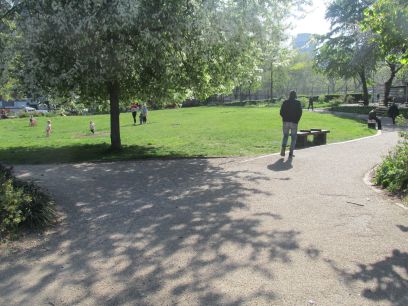
My walk started at the busy Jubilee Line exit from Waterloo Station with the Wellington where I have lunched several times across the road. The first bit was through busy roads but even here there were green spaces like Waterloo Millenium Green.


My guide book, David Fathers' London's Hidden Rivers, suggests the river starts half way down King Edward Walk but for me it really started at Geraldine Mary Harmsworth Park where the Imperial War Museum is located. I spent a little time exploring the park area and intend visiting the museum itself soon.
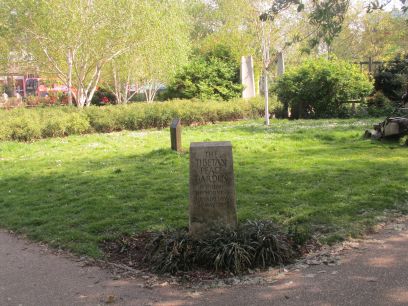

Within the park is the Tibetan Peace Garden, opened in May 1999 by the Dalai Lama. A quite place for contemplation and the inscription, in four languages, on the pillar particular relevant to current events. "May it remain as a symbol to remind us that human survival depends on living in harmony and on always choosing the path of non-violence in resolving our differences."
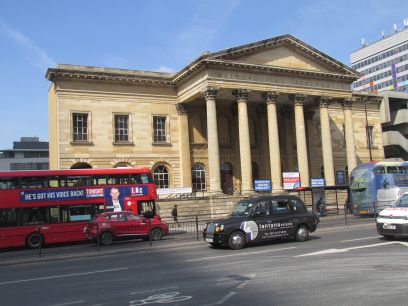
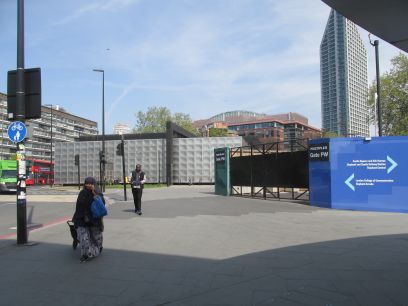
Out of the park the walk goes down Brook Drive named after the river which runs parallel to it. Then into Elephant and Castle, with major redevelopment going on at the moment and a busy road intersection. The Metropolitan Tabernacle despite its name is a Baptist Church. Across the roundabout the big stainless steel panelled box is an electricity substation for London Underground and named the Michael Faraday Memorial after the engineer who was born nearby. But the tube station opposite was closed with the shutters drawn for reasons I failed to find out.

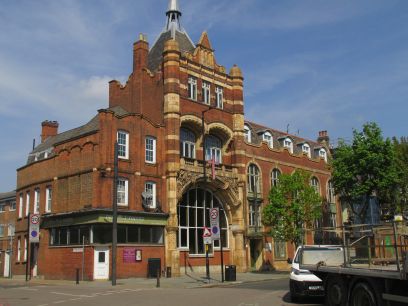
More suburban streets as the river wends it way through the former Heygate estate which was quite a shady area before being redeveloped from 2014. Along here also was the Hartley's jam factory which has now been redeveloped to housing with The Jam Factory as a reminder of its past. Then a bit further on Bermondsey Methodist Church in their South London Mission, another of the several churches passed.
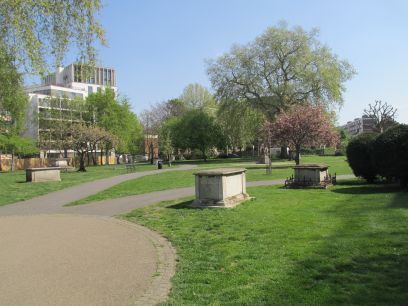
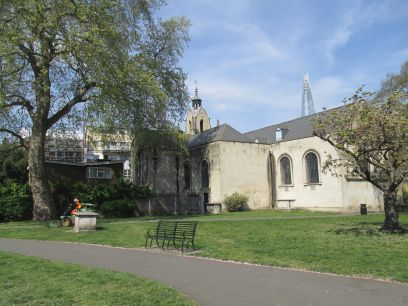
In much earlier times was the large Bermondsey Abbey which was a victim of Henry VIIIs dissolution of monastries. The area where it was, orginally by the river, is now another big redevelopment. St Mary Magdelene Church and churchyard is just north of the abbey grounds with the present building built in 1830.

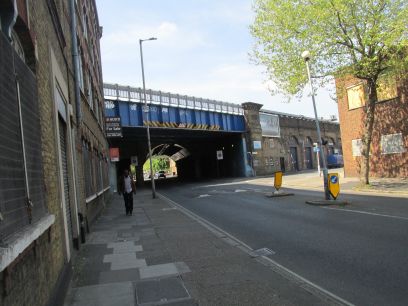
We now follow the river through Bermondsey along Grange Road. This area was formerly the hub of Bermondsey's leather industry and the river was a source of water for this industry. It was tidal at this point. During the 20th century production declined and ceased entirely by 1990 though many of the mill buildings remain. The street Neckinger remains as a reminder of the river. The Abbey Street railway bridge opened in 1836 and was the first railway line in the capital.
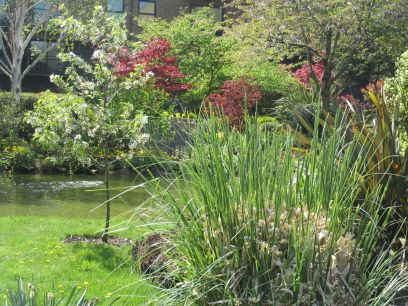
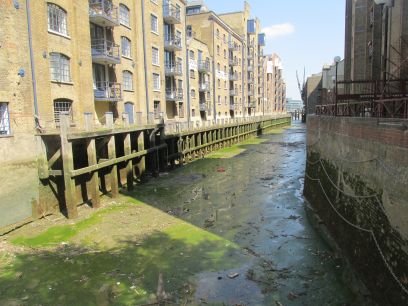
The final stretch of the river was diverted during the industrial period with the result that an island was formed, Jacob's Island. Because of all the industry, tanneries and damp marshy grounds this developed into one of London's most squalid areas. Charles Dickens used it as the home of Bill Sikes in Oliver Twist. It burnt down in the Great Fire of Tooley Street in 1861 and was redeveloped and more recently coverted into offices and appartments. Providence Square has a water feature where the stream once ran, this seemed to be private for the flats as the gate was locked with a card release system. The Neckinger emerges into St Saviour's Dock, once busy with boats for the leather works.
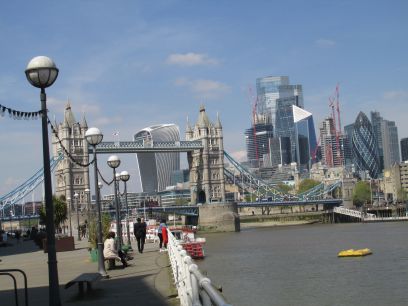
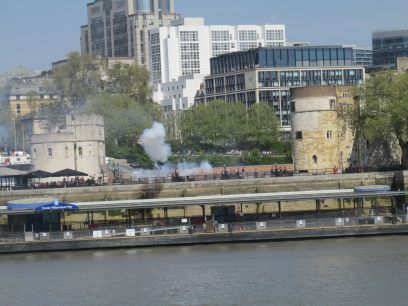
Out on the Thames and the end of the day's walk. I continued along the south bank, under Tower Bridge. Hearing a loud bang I looked up just in time for a 62 gun salute for Her Majesty to celebrate her 96th birthday. What a fitting tribute to our Queen in this Jubilee year. Lunch at Hornimans then heading home via London Bridge and Waterloo after completing the tenth of my hidden rivers.